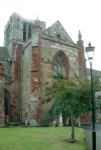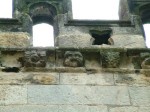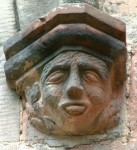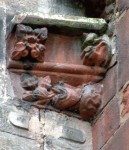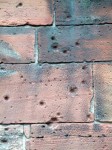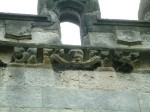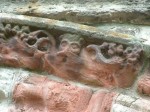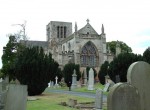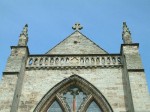Haddington Church
Haddington is the county town of East Lothian (previously known as Haddingtonshire). It was one of the earliest Royal Burghs in Scotland having been so created during the reign of David I (1124 – 1153. born 1084). When his son, Earl Henry married Ada de Warrenne in 1139 David I gave her the Burgh as a marriage gift. It was here that David I’s grandson Alexander II (1214 – 1149. born 1198) was born.
The town has not had a happy history having been destroyed three times during the 13th century and again in 1356 when Edward III (1327 – 1377 born. 1312) invaded Scotland in revenge for their having re-taken Berwick on Tweed. That invasion came to be called The Burnt Candlemas. Each time the town was rebuilt.
During 1548 – 1549 Haddington was held by English forces and was besieged by a combined Scottish & French force. When military relief arrived from England the English forces retreated to Berwick on Tweed having first reduced Haddington to ruins. After the departure of the English forces the Burgesses of the ‘Lamp o’ Lothian’ started to rebuild the town. The ‘Lamp o’ Lothian’ was the local name first used for the Franciscan friar’s church and then applied to the town as a whole.
During the siege the Treaty of Haddington was signed, on 7th July 1548, between the Scots and French forces which confirmed the betrothal of Queen Mary [Mary Queen of Scots] (1542 – 1567; born 1542; died (executed) 1587) to the Dauphine of France and which promised French military assistance to drive the English from Scotland.
In 1670 the records of the Free Gardeners* commence. This organisation, which appears to have emulated Free Masonry (or Freemasonry), eventually grew to a size that dwarfed Freemasonry with more Lodges and more members. By 1954 the Free Gardeners had ceased to exist in Haddington.*
By the end of the 17th century Haddington had become a centre for making woollen and broadcloth products. The economic high point for the town was attained during the 18th and early 19th centuries when it became prosperous as the main grain market of Scotland and also as a major staging post on the Edinburgh – Newcastle-Upon-Tyne road.
- St Mary’s Collegiate Church from the west
- War Memorial
- Church Notice Board
- Cornice
- Christ Symbol Stone
- Defaced Angel
- Christ Symbol
- Cornice
- Cornice
- Cheeky Monk
- Green Man
- Fragment
- Musket Holes?
- Murdered Apprentice
- Green Man
- Green Man
- Cornice
- Green Man
- West end of the nave
- South wall of the nave
- Lamp o’ Lothian from the north west.
- Haddington Grave
- The West Face
- Lamp o’ Lothian South
The above pictures are all of the exterior of Haddington Church, also referred to as the Lamp o’ Lothian.



